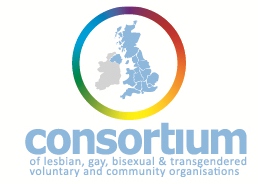Toolkit aimed at nurses who work with children and young people, whether in community or hospital settings.
Extract from Document
Suicide often comes at the end point of a complex history of risk factors and distressing events. Suicide prevention has to address this complexity. No suicide is ever inevitable, and this guide provides a toolkit to support nurses working with young people who may be trans, to support their distinct needs.
The National Suicide Prevention Strategy ‘Preventing suicide in England’ provides a national approach to suicide prevention that recognises the contributions that can be made across all sectors of our society. It draws on local experience, research evidence and the expertise from members of the National Suicide Prevention Strategy Advisory Group, some of whom have experienced the tragedy of a family suicide.
The national suicide prevention strategy supports a tailored approach to improve mental health in specific groups including:
- children and young people
- people who are especially vulnerable due to social and economic circumstances
- lesbian, gay, bisexual and transgender people
- black, Asian and minority ethnic groups
Nurses play a crucial role in health care by providing compassionate and inclusive care to all. As nurses, there is a duty to be constantly aware of those who may be vulnerable, regardless of their demographic and the symptoms that they initially present with. Because most people who take their own lives are not in touch with mental health services, the possibility that nurses may come into contact with a suicidal person inside or outside of the health care arena is significant.
The Royal College of Nursing Congress has highlighted the importance of addressing problems affecting trans people, and the need to support nurses to work with them effectively. At the same time, the Department of Health has implemented a cross-government outcomes strategy to prevent suicide in England. This toolkit is part of the broader effort to improve the support and training for nurse when trying to avert suicide.
As trans young people’s sense of self develops, sometimes in an emotionally unsupportive environment, trans young people’s fear of rejection from family, peers and society can creates a sense of ‘otherness’. This can leave trans young people particularly vulnerable to depression and suicidal thoughts.
One study in the United Kingdom (UK) found that 34.4% of trans adults had attempted suicide at least once and almost 14% of trans adults had attempted suicide more than twice. This higher risk of suicide is related to experiences of discrimination, including stigma, transphobia and bullying. These negative experiences occur in many trans individuals’ everyday lives, whether at home, work or school. This stigma and discrimination, and the fear of it happening, can make individuals in this situation feel unable to reach out for help when they need it.
As nurses, we can help develop an inclusive clinical environment that makes it clear that we welcome diversity and support young people, explicitly including trans youth. We can make sure that we are not marginalising the people who most need our support at times of personal crisis. We also have a duty to ensure that vulnerable people in our care are kept safe from preventable harm. We need to be prepared to intervene quickly when someone is in distress or in crisis, and this toolkit provides a basis for this potentially life-saving support.









